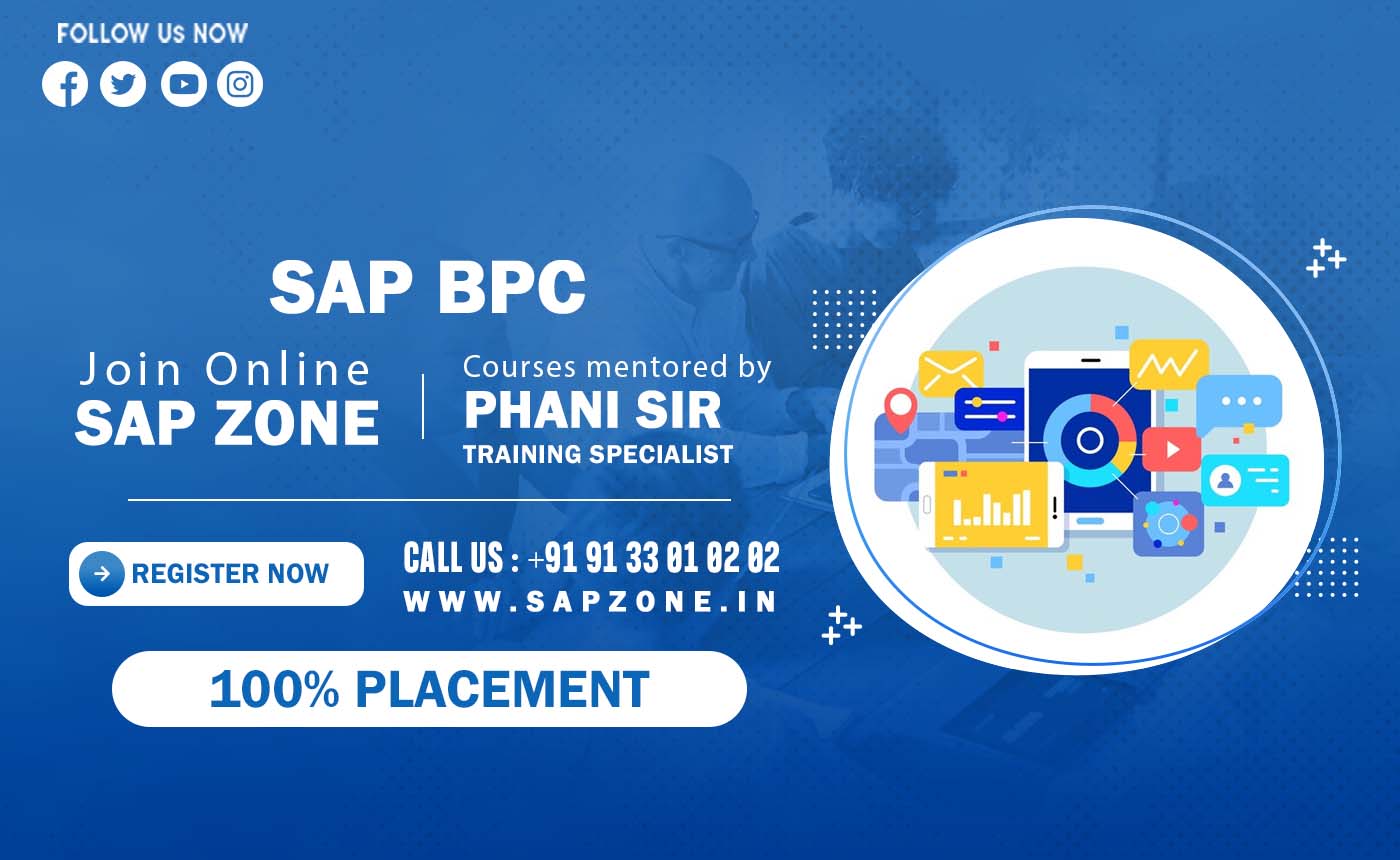SAP BPC Course Content
Daily 1 hour session for every topic and will complete within 25 days
- Course Over view
- Course Objectives
- Concepts and Objects in BPC Administration
- Business Objects Overview and Advantages of BPC 10.1
- NW HTML5 Web Client Overview
- Environment Management
- Dimension Management
- Creating Models
- Security
- Planning
- SAP EPM add-in
- Creating a Planning and Consolidation Connection
- EPM Client Microsoft Office Excel
- Create a Report
- Create a Input Form
- Comments
- Enable Comments
- Input and Retrieve Comments
- Multi-Reporting and Axis Sharing
- Create a Multi-Reporting Spread Sheet
– Share axis from one report with another report
- Formatting
– Dynamic formatting
– Link a formatting sheet to one or several reports
– EPM Function to apply formats
- EPM Cell-based formulas
– EPMAxisOverride Cell-based formula
– EPMDimensionOverride Cell-based formula
- Data Acquisition, Transformation, ECC and BW
– Data Acquisition, Transformations, Packages, and Package Links
– Managing data with Data Manager
– Flat File upload
- Working with Logic Scripts
– Logic Script and Allocation – Dimension Member Formulas
- Business Process Flows
- How to manage Life Cycle of BPF Instances: Create/Start, Suspend, Reset, Archive
– How to manage assignment of Process and Activity Instances
- Others
– Work Status
– Audit
– Transports
- BW
– Overview of BW from BPC perspective
– Validating data in BW
- Security
– Users
– Teams
– Data Access Profile
– Task profiles
- NW Consolidation
– Balance Carry Forward
– Account Transformation
- Currency Translation
- IC Eliminations and adjustments



